You can read this as a blog post on The Elliott Homestead right here.
As with most tasks on the homestead, I find it far easier to do the task than to do the task while documenting it. I find it fairly easy to do things… I find it fairly easy to document things… but I do struggle to do both at the same time. So in my hopes to share with you about our lamb harvest and how we've found it easiest to cut, wrap, and eat the meat, I documented as best as I could while simultaneously running a meat grinder and bone saw. Stuart was out watering the animals for the better part of the cutting and wrapping process, so my greasy hands were all that was left.
As Jerry Seinfeld would say “It was what it is.”
None the less, I wanted to share what a lamb harvest looks like. The particular lamb that I'm sharing here was a fairly small lamb. This lamb came from an older ewe that was well past her mothering prime. The result of old ewes is often less milk and the result of less milk is smaller lambs. Couple an older ewe with the fact that our lambs are grassfed and not fattened on grain – and the result is anywhere from a 35-50 pound harvest at the end of it all.
We've since brought in new breeding ewes and also have a new ram, Zeus, who is large and in charge and lookin' for chickies. Just what you want in a sire.
Anyway, back to the lamb. Frankly, we should have harvested our lambs in October. But since we spent the better part of September in Sicily and came back to a whirlwind of homeschool demands, they kept getting pushed off further. We finally cleared out a Saturday morning to harvest half of the lambs (the other half remain in the field, at least until this weekend).
For the sake of brevity here, I'm going to be sharing how I piece up a lamb once it's already killed and skinned. There are details on how we do that here. But wait. We've changed tactics a bit after all these years.
A few notes on killing:
I cry every time. It's painful and makes my heart feel like it's going to explode. I hate it. I hate it. We've done this more times than I can count and I still hate it. My kids cry. We always mutter how hard it is. We always mutter how we hate death. We always pray for the animals before we take them. Did I mention I hate this part?
We make a point to do it early in the morning. We will feed the animals when we are perfectly set to kill. The lambs will immediately begin to eat their hay, at which point, Stuart will grab one of their back legs from behind. This is just enough of a grip (the ankle is small enough to grab in one hand) to fairly peacefully flip the animal on it's side, at which point, I rush in to hold the lamb down for him. This is far easier for us, given our set up, than separating off lambs or trying to catch them in the middle of the day – at which point, chaos always ensues.
Once I'm secure in holding the lamb down (the lambs are calm on their side), Stuart will slit the artery in the lambs neck using a very sharp, large knife. We have found that using a knife exclusively is much quicker, cleaner, and swifter than using a gun. Our children are often out there helping us, there are a lot of animals in the field, and getting a clean shot is never a guarantee. We found the risk of using the gun too great. Using a knife is horrible in the sense that it is intimate and dramatic. But it's what needs to be done. Stuart cuts and then Owen or I will hold the lamb still for a few moments while it passes as he moves on to grab the next one.
As hard as the killing is, it is a fleeting few moments. Once the lamb is killed, the work begins – it becomes food.
If you want details on how we skin a lamb, you can find that here – our method has changed very little over the years.
Once the lamb is skinned, it is hung somewhere cool for a few days. Often times, we cut the lamb into primal cuts so that we can fit the carcass in the cold room on shelves. This cool down time allows the meat to be colder (which makes cutting easier) and allows the meat the relax. Given proper air circulation around the meat, it can age like this for quite a few days, really.
Assuming all that has been done, here's what you're left with.
Please note: I am missing the lamb neck (which we'd already slowly stewed and eaten), the kidneys, heart, and liver (which go to the dog and chickens), and have one extra leg pictured because I (apparently) can't count animal parts correctly and grabbed an extra from the cold room.
Never the less:
This lamb is already broken into primal cuts. Here's a great video on how to do that part. Cut into primal, each lamb will yield:
2 shoulders
2 legs
1 central rib cage (which includes loins on both sides of the spine)
1 frontal rib cage (which includes breasts)
1 neck
So here's how I break mine down into pieces.
The Leg Primal Cut
Yield: 2 legs of lamb, 2 shanks
First up, the leg. This is the back leg of the lamb. Essentially, this is its butt check. There are two of these per animal.
To Eat A Leg:
The leg is tender and wonderful to grill whole or roast in any way. It is not tough and with that beautiful layer of fat on top, is wonderful eating. Lamb leg grilled over charcoal, served with a gremolata sauce, is a personal favorite. I cook the lamb leg until it's medium rare. You could cut the meat off the bone and slow cook it into Lamb Tagine, but there are less tender and wonderful cuts for that.
I keep my leg just like this – the only thing I do to process it for the freezer is to cut the shank off. The shank is the small narrow portion of leg on the front and hind legs.
To Eat A Shank:
The shanks are tough as they do a lot of work for the animal. They're wonderful to add into a large pot of water with a cup of wine and some aromatics, boiled until tender and then picked from the bone. Alternatively, the meat can be cut off the bone, cut into 1″ pieces, and slow roasted with vegetables for hours and hours fall apart tender.
The Shoulder Primal Cut
Yield: 2 shoulder roasts, 2 shanks
Next up is the shoulder primal. This is the front shoulder and leg of the lamb. There are two of these per animal. I process this primal cut the same way by simply cutting off the front shank of each shoulder. This yields 2 shoulder roasts and 2 shanks in total per animal.
To Eat A Shoulder: The shoulder of the animal takes a lot of weight throughout the animal's life and is very active. Therefore, it tends to be slightly more tough than the leg. I keep my shoulder roasts as whole, just like this. I will rub the shoulder roast in spices and salt and slow roast it until it's fall apart tender. Alternatively, the meat can be cut off the bone, cut into 1″ pieces, and used like a stew meat. Shoulder roasts are delicious to use for slow cooked lamb that is then finished on the grill for some smoky flavor. It's wonderful sliced up and served in naan. The slow cooking allows you to pull the shoulder blade out easily. Now THIS is the cut to turn into Lamb Tagine.
To Eat A Shank:
Just like the hind shanks, the front shanks are tough as they do a lot of work for the animal. They're wonderful to add into a large pot of water with a cup of wine and some aromatics, boiled until tender. Alternatively, the meat can be cut off the bone, cut into 1″ pieces, and slow roasted with vegetables for hours and hours fall apart tender.
I package and freeze all four of the shanks together, as this is usually the portion of meat that I would normally pull out for a family meal.
The Loin/Rib Primal
Yield: 2 loin roasts (or lamb chops), riblets (or ground lamb)
Perhaps the most confusing cut for people when they're breaking down an animal is the rib/loin primal. The question of how you break this down is ultimately what you want to eat. Do you want loin roasts? Do you want lamb chops? Both of those come from the same area, so you can only choose one. I am pointing to the “medallion” – the loin. This is the tenderest part of the animal and a culinary prize for those who enjoy it.
I break down this cut by using a bone saw to cut off the sides of rib:
What you see now that I'm holding in my hand is lamb ribs and lamb breast. The roast still laying on the cutting board at this point can be cut into lamb chops, simply by using a bone saw to cut through the spine and piece each lamb chop out individually. This can always be done later too. This time, I'm simply going to cut this into half by using a bone saw down the central spine you see in the middle there. That gives me two, beautiful loin roasts or loin roasts that I can still cut into lamb chops in the future if I so desire.
To Eat A Loin Roast:
A loin is tender and will be ruined by slow-cooking. I like to cook my loin rare and serve it with a beautiful, bright sauce – something with mint, parsley, or lemon. To cook a loin roast, I put it over a charcoal grill. If you don't want to bother with cutting the loin out of the bone after cooking, you can cut it out beforehand. I cook it on the bone, always, and then cut it out after. There are 2 loin roasts per animal.
Here is the ribs and breast that I cut off in the earlier photograph.
And here are the ribs separated from the breast. This is not hard to do, as the knife slices through the meat of the breast and not through the bones of the ribs – it makes knowing where the line is quite easy.
To Eat The Ribs:
Lamb ribs are delicious slow cooked, covered with foil, until tender and then grilled. Alternatively, the meat can be cut off the bone, the breast meat cubed up, and the whole lot processed for ground lamb. That's what I'm doing today because I still have a bunch of lamb ribs in my freezer and my ground lamb supply is running a bit low. The bones, are of course, saved for roasting and making stock from.
To Eat the Breast:
Lamb breast is thin and a bit tough. My favorite way to use it in the kitchen is to grind it and use it just like you would any normal ground meat. It makes delicious bolognese.
Rib meat, cut off the bones:
Breast meat, cut into smaller pieces for grinding:
So here's the whole lot that we've worked through thus far:
Voila! A world of culinary possibilities await us.
We have found vacuum sealing our meat to be the best way of preserving it in the freezer. A small investment for well kept meat! Labeled clearly, of course. Last year's harvest of lamb must be eaten first before we dive into this…
Ooh – and one more thing. Lamb is meaty and mild, not to be confused with mutton which is an older ewe and often very flavorful, and tough, in the way that old sheep are. Also worth noting: we raise a hair sheep, Katahdin, here on our farm. Hair sheep produce less lanolin in their wool and have a much less pronounced “sheep” flavor because of it. If you've never eaten lamb before, or don't think you like it, I'd really encourage you to give this breed a go. They're easy keepers, prolific, and produce a wonderful harvest of meat each year.
The bonus is that if you don't have special equipment or a tractor, you can still harvest this size of animal with ease on a small farm, making it ideal for homesteads just like ours.
I love our sheep. I love eating this lamb that we harvested with our own hands. I'm grateful to get to cook it!
And Amen.
Cheers,
Shaye





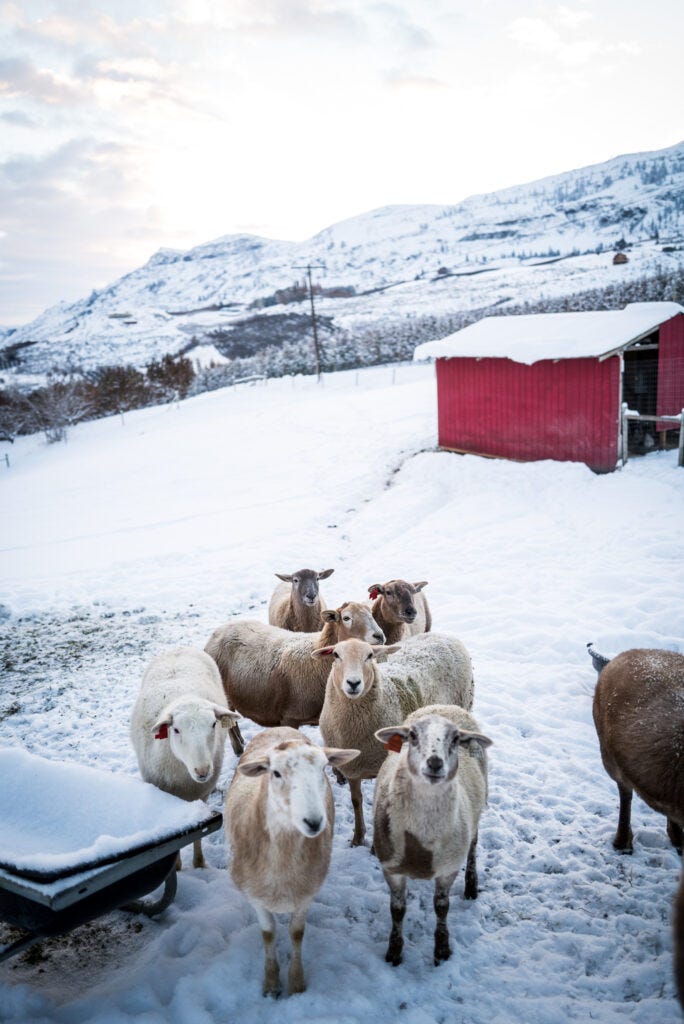
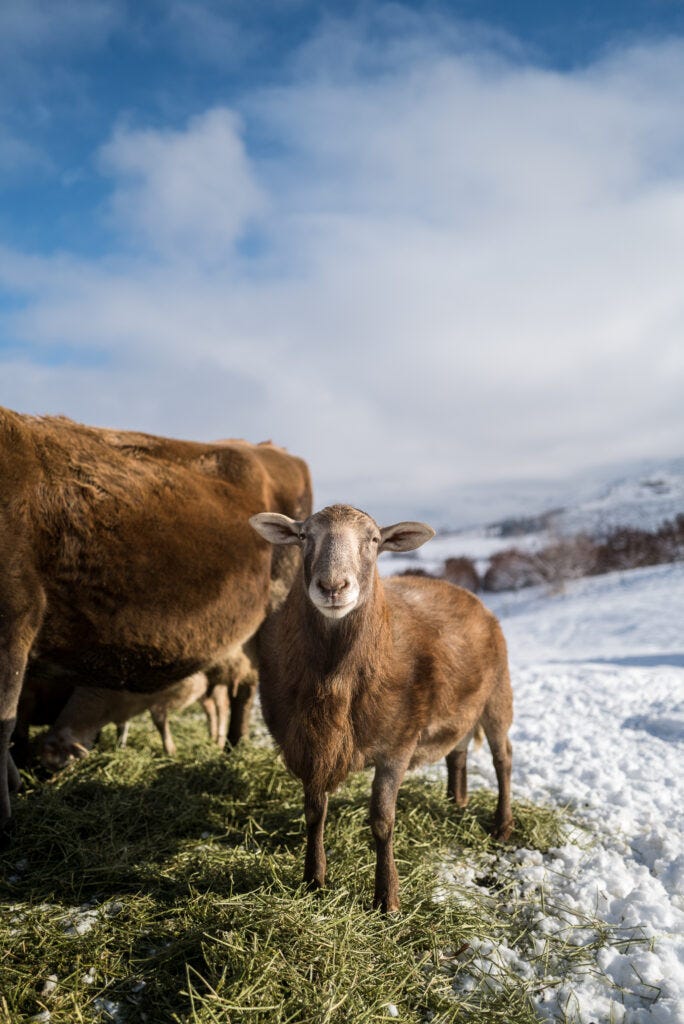
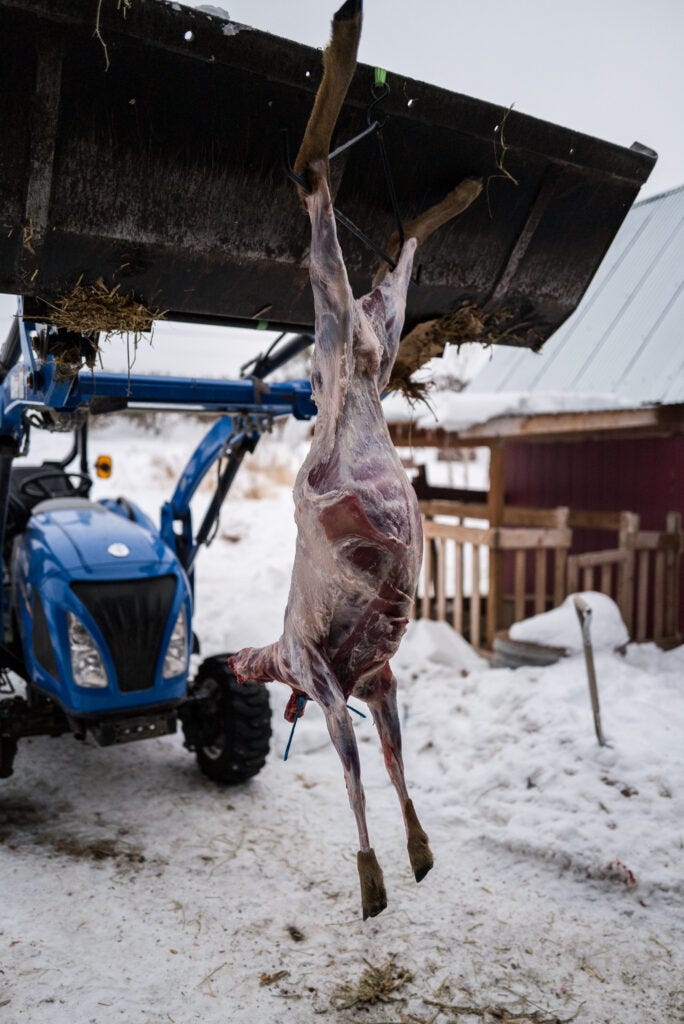

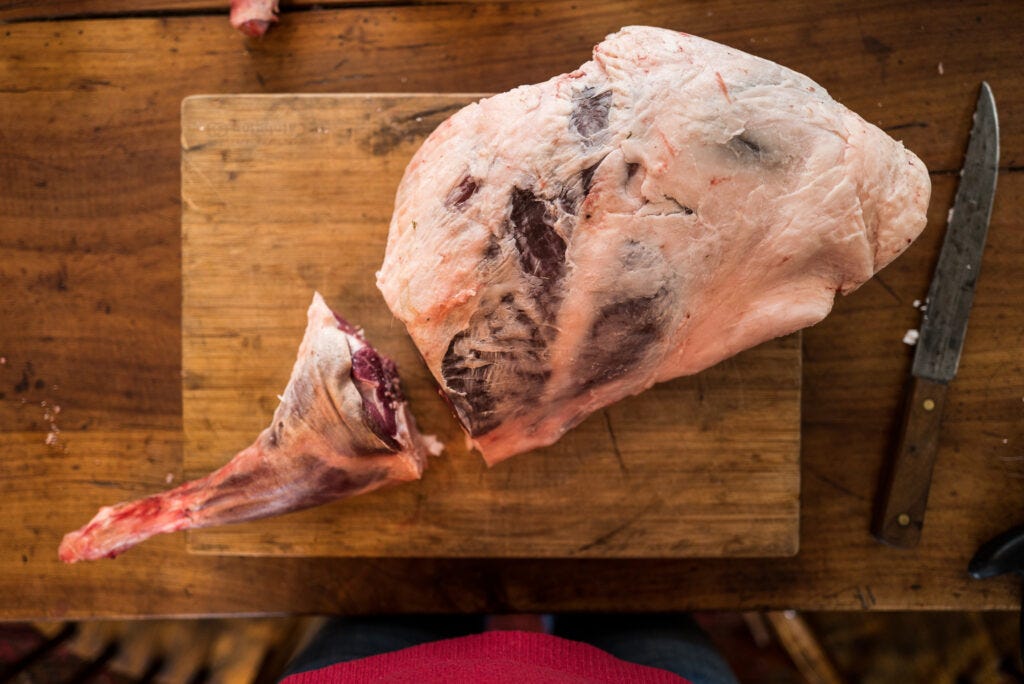
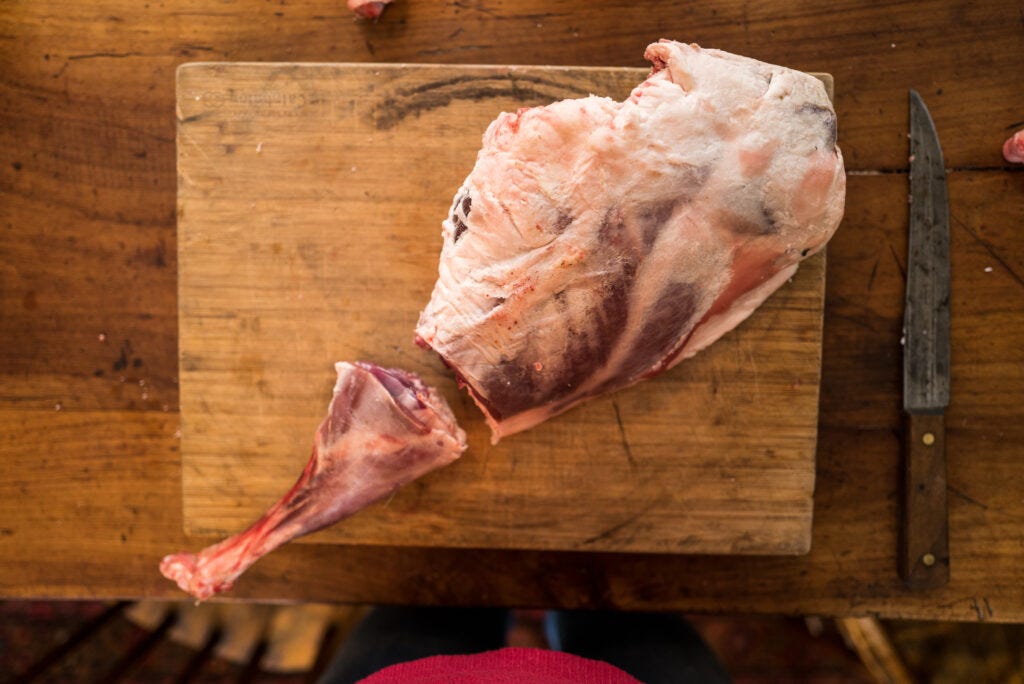
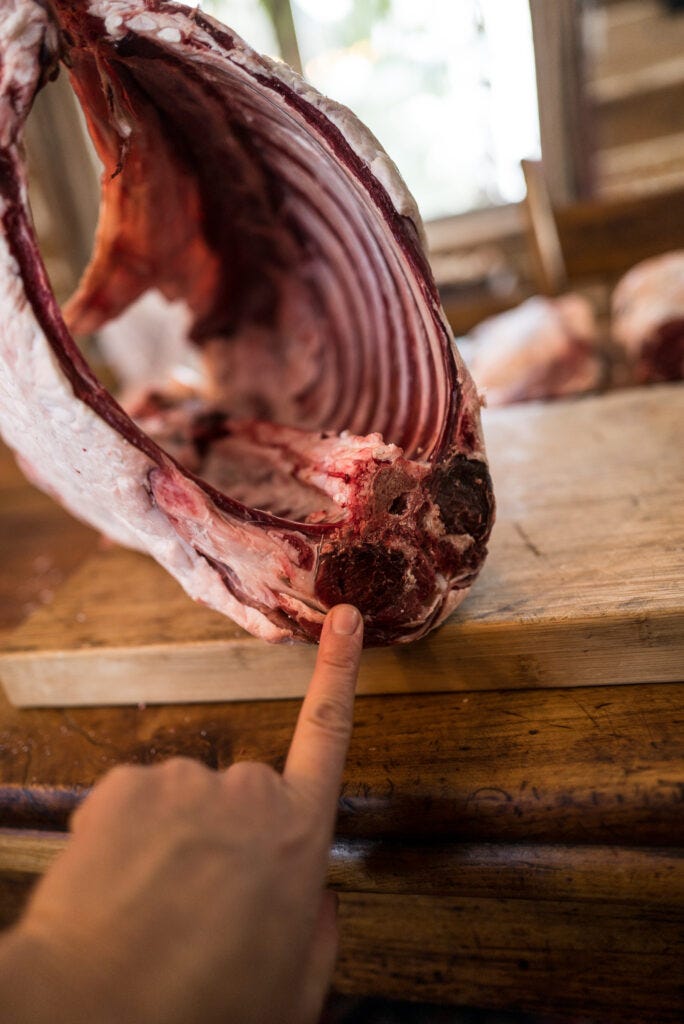
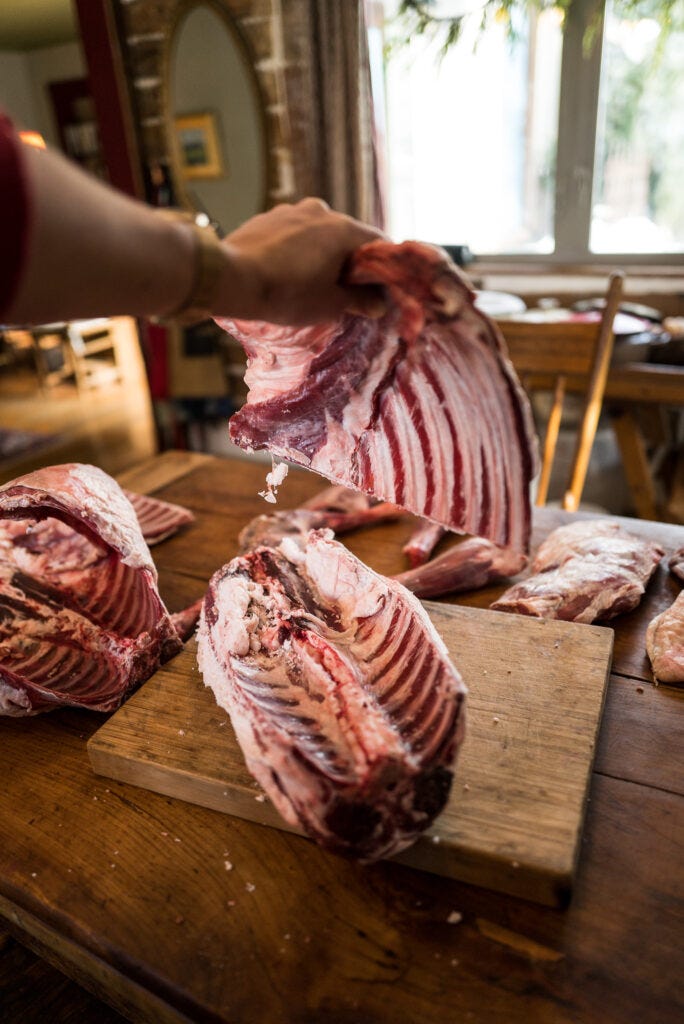
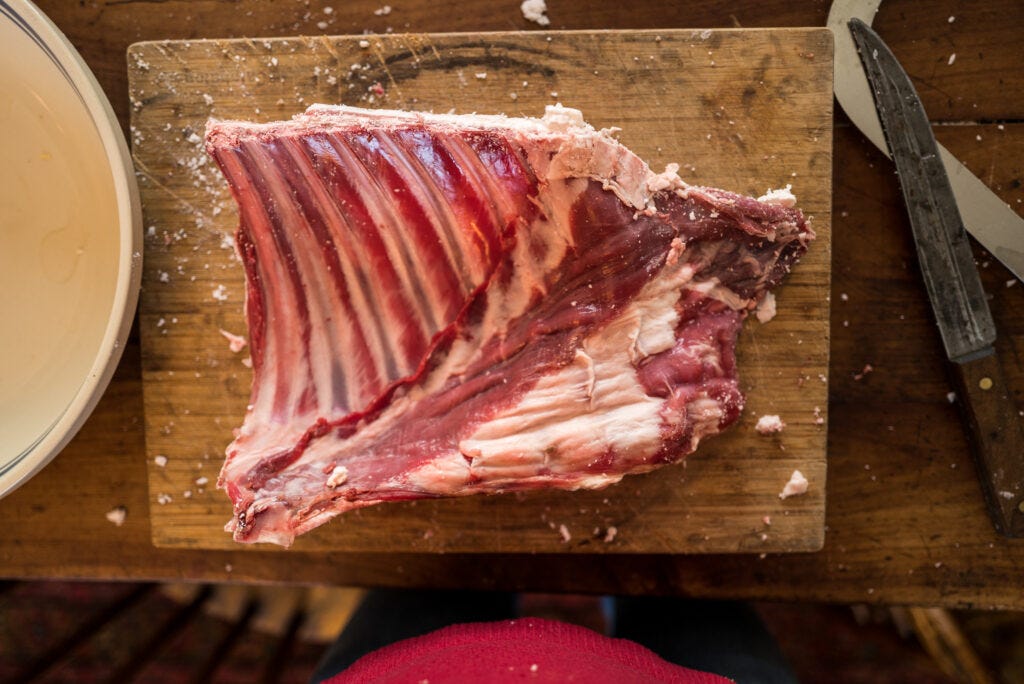
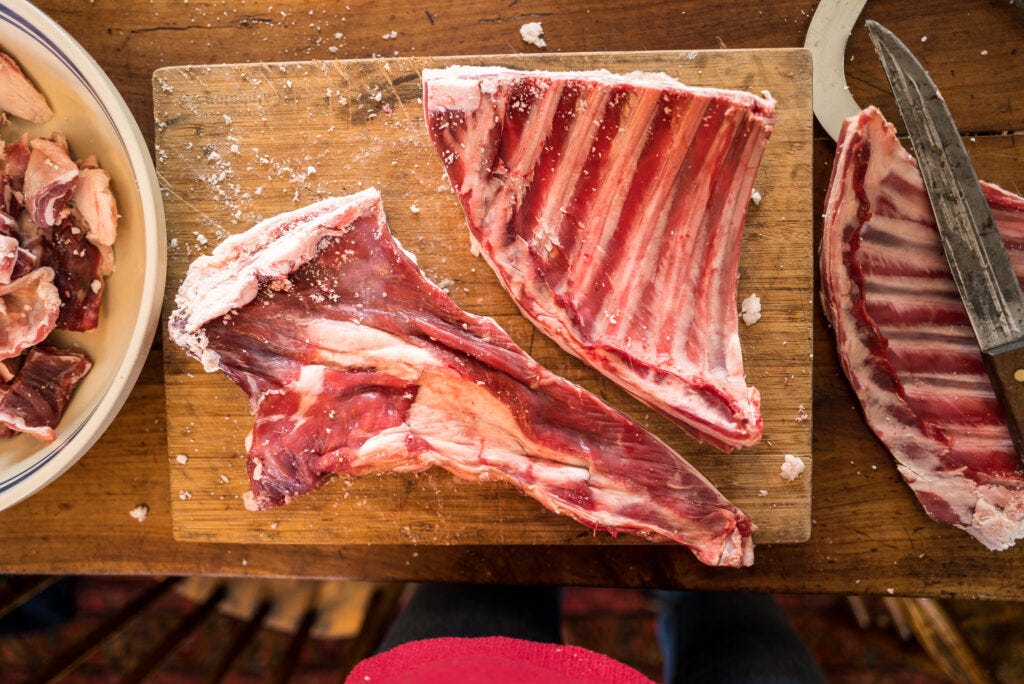
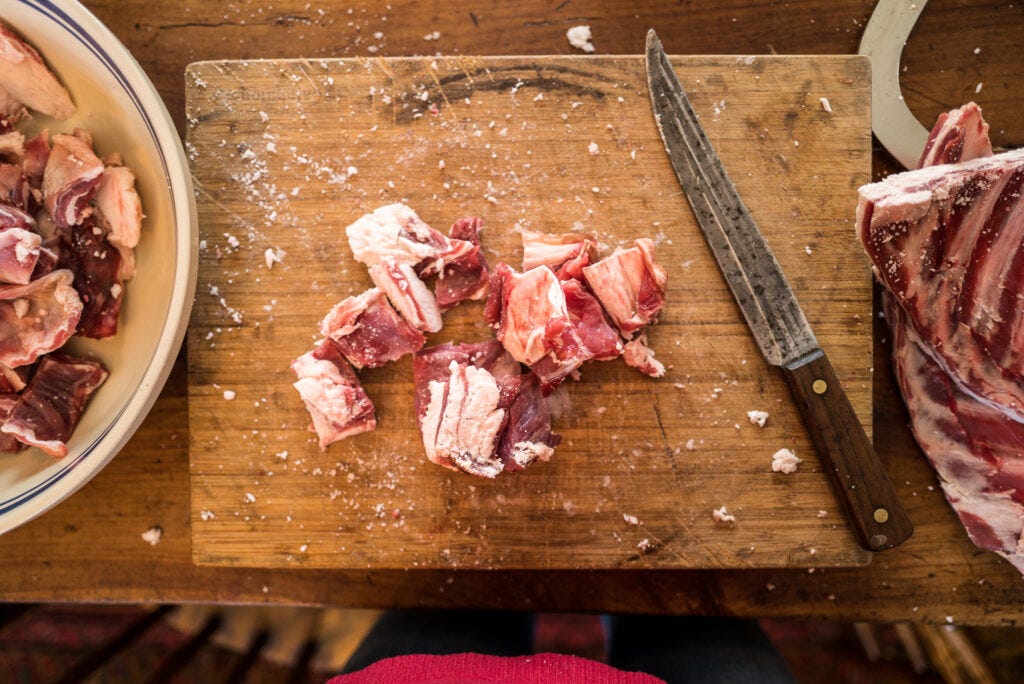

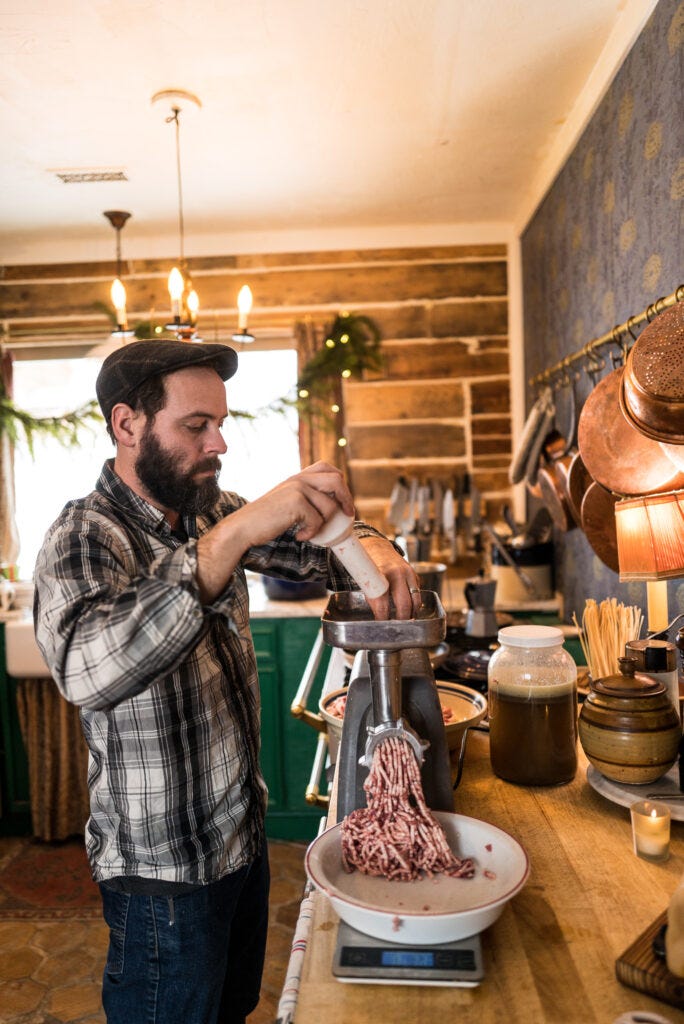
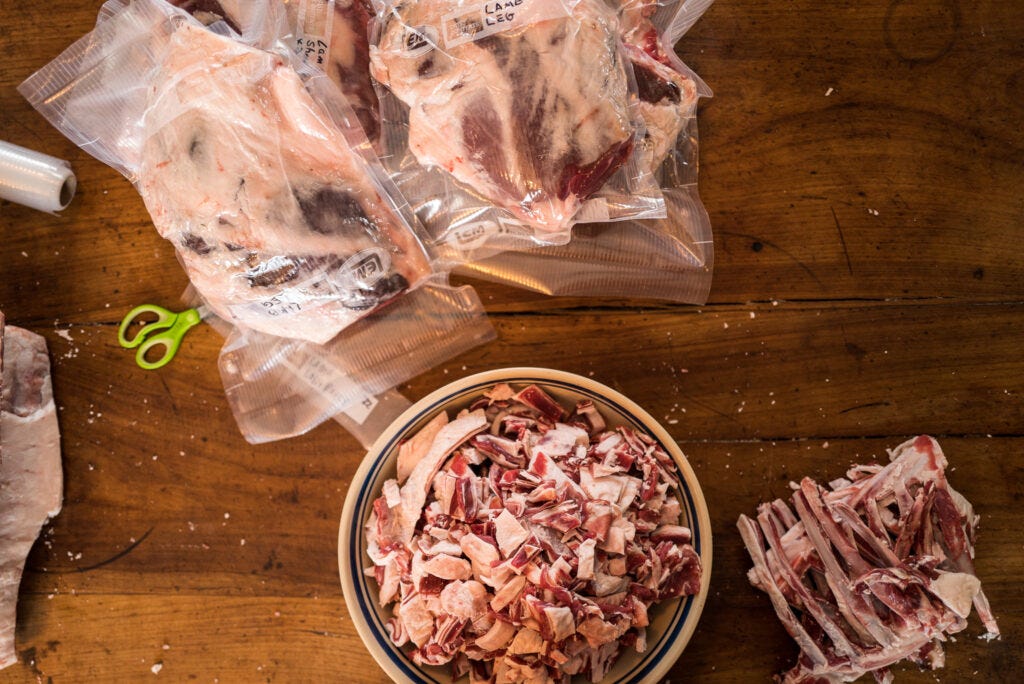
Great post! Here is a question : at what age do you ideally butcher your lambs? Or how do you feel is too far gone?
Thank you so much for writing about this! My family is harvesting our first pig this Saturday. This post was such an encouragement to me that it’s going to be ok. It’s ok to be sad and feel a whole range of emotions. Then get to the work of butchering and filling the freezers. What a blessing! Thank you again for sharing!